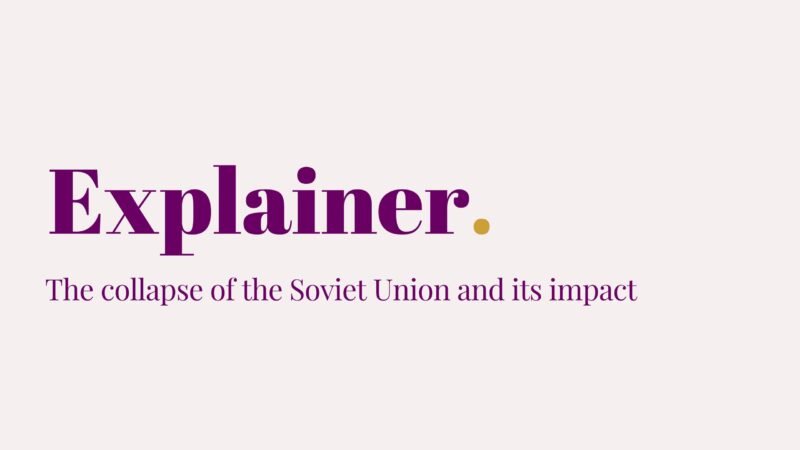Explainer: The collapse of the Soviet Union

The collapse of the Soviet Union was a significant event in modern history that marked the end of the Cold War and had far-reaching consequences for international relations. The Soviet Union, which had been a superpower for over 70 years, dissolved in 1991, leading to the formation of 15 independent states, including the Russian Federation.
The reasons for the collapse of the Soviet Union were complex and included a combination of internal factors, such as a stagnating economy, widespread corruption, and political infighting, as well as external factors, such as the decline of communism as a political ideology and the success of the United States in winning the Cold War.
The collapse of the Soviet Union had a profound impact on international relations, leading to a major shift in the global balance of power. With the end of the Cold War, the United States emerged as the sole superpower, with unrivalled military and economic power. This change in the international system led to a period of greater cooperation between the United States and Russia, as both countries worked to build a new relationship based on mutual cooperation and respect.
In addition, the collapse of the Soviet Union also had a significant impact on Europe. The end of the Cold War led to the reunification of Germany and the expansion of NATO, which was seen as a significant security guarantee for Western Europe. It also allowed for the integration of Eastern European countries into the European Union, which helped to spread democracy and stability in the region.
However, the collapse of the Soviet Union also had negative consequences for some countries. For example, many of the former Soviet republics faced significant economic and political challenges as they transitioned to market-based economies and democratic systems. In some cases, this led to the rise of authoritarian leaders, political instability, and conflict.
The world before and after the collapse
The world before and after the collapse of the Soviet Union was vastly different. Before the collapse, the world was divided into two opposing political and military blocs: the Soviet-led Eastern bloc and the Western bloc led by the United States. This division was marked by intense political and military rivalry, which dominated international relations and threatened global security through the arms race and the threat of nuclear war.
After the collapse of the Soviet Union, the world became unipolar, with the United States emerging as the sole superpower. This led to a shift in international relations, with the United States exerting significant influence on global affairs through its military and economic power.
The end of the Cold War and the collapse of the Soviet Union also brought an end to the division of Europe and allowed for the reunification of Germany and the integration of Eastern European countries into the European Union. This helped to spread stability and democracy in the region and promote economic growth.
However, the collapse of the Soviet Union also created new challenges, especially in the former Soviet republics. Many of these countries faced significant economic and political difficulties as they transitioned to market-based economies and democratic systems. In some cases, this led to the rise of authoritarian leaders, political instability, and conflict.



















